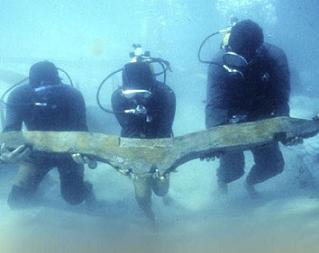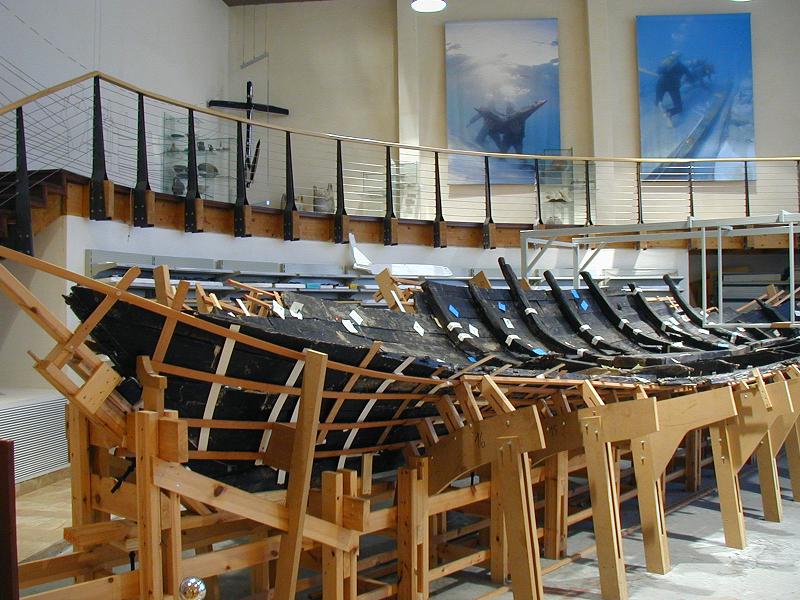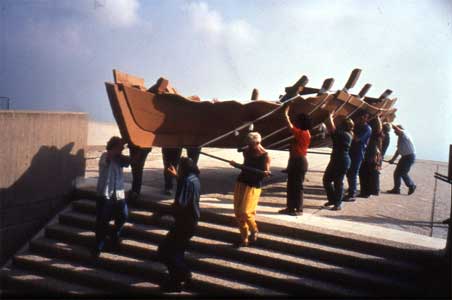 Pile of stones that Eshel discovered off the shore. The stones were not typical of the region and caused Eshel to further examine the area.Ships are unique. A ship is a microcosm of politcal, economic, cultural, and technological activity. Why do we deem the discovery of a ship so significant? Ships serve as a bridge between different cultures and different peoples carrying goods, ideas, and technologies. Understanding the technological achievements embodied in the building of a ship, its navigation, its method of propulsion, its loading capacity, and its constant confrontation with the elements is a major task.
Pile of stones that Eshel discovered off the shore. The stones were not typical of the region and caused Eshel to further examine the area.Ships are unique. A ship is a microcosm of politcal, economic, cultural, and technological activity. Why do we deem the discovery of a ship so significant? Ships serve as a bridge between different cultures and different peoples carrying goods, ideas, and technologies. Understanding the technological achievements embodied in the building of a ship, its navigation, its method of propulsion, its loading capacity, and its constant confrontation with the elements is a major task.


The planks that were distorted have since been reshaped. Each piece of planking was submerged for a night in PEG, a chemical compound used to conserve wooden artifacts, at 60°C to render it flexible. It was then eased into its original shape and held in place using battens and clamps. This jigsaw puzzle was made easier by the original labeling (stainless steel needles and Dymo tape), which survived the years of the conservation process and all of the handling to which the parts were subjected.


